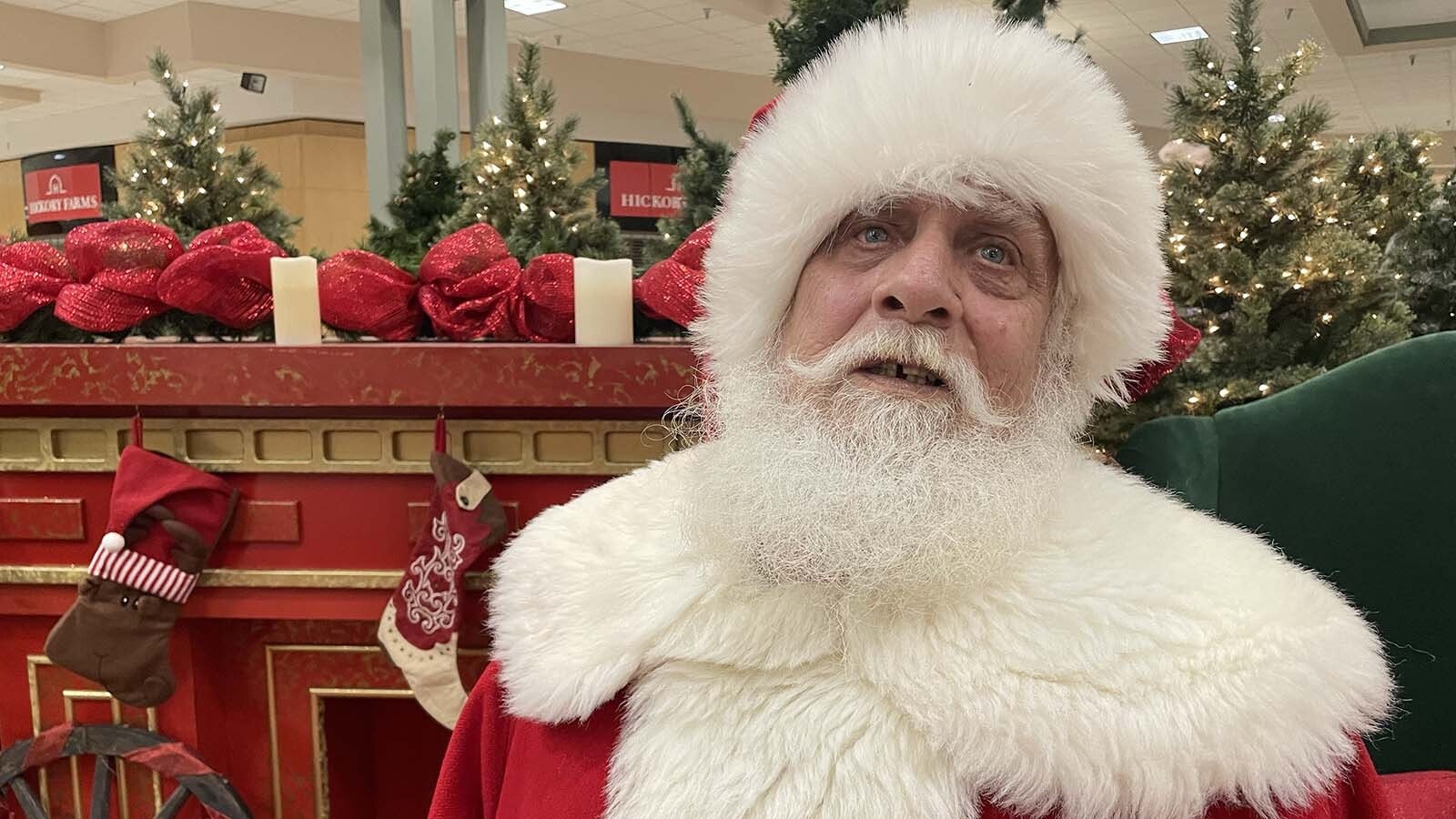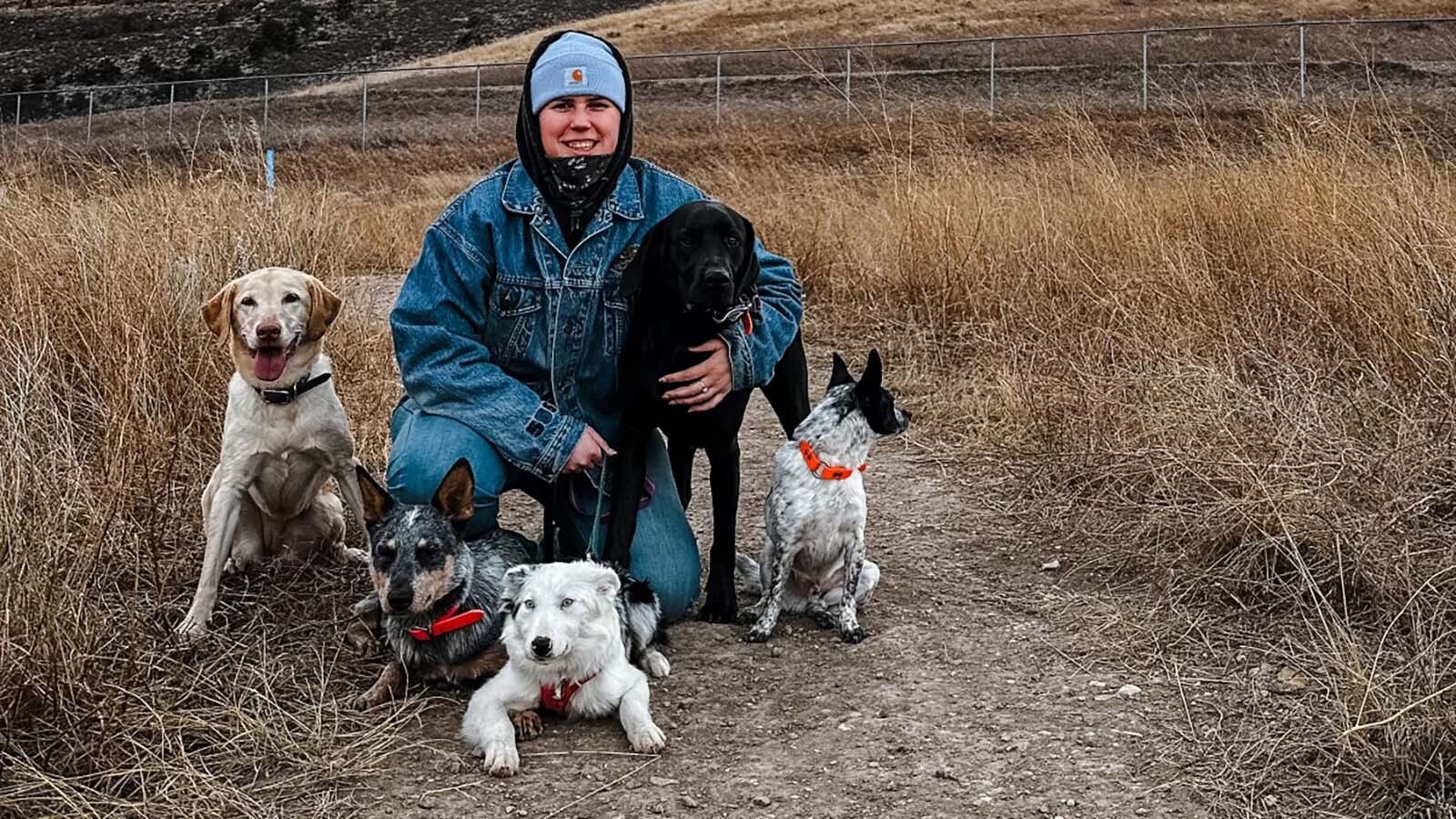Each year on Veterans Day and again on Memorial Day, the small group of people will wind its way through the Mount Pisgah Cemetery in Gillette, Wyoming. It won’t be difficult to see which graves belong to military veterans.
There are 1,057 of them, all marked with a simple white cross and small American flags placed by volunteers.
But it’s the forgotten soldiers that will be the focus of Campbell County Rockpile Museum tour on these days dedicated to America’s veterans with a tour that stops at a headstone to tell the story of the soldier laid to rest beneath it.
On some of the oldest graves, a new marker has been placed in remembrance of soldiers dating back to the Civil War.
“Communities have a duty to remember those that came before them and to preserve that, not only for ourselves, but for the families and those generations left behind,” said Darin Edmonds said.
He’s the longtime superintendent of the Gillette cemeteries and has been grateful for this partnership with the museum.
And for him, it’s personal. His father is one of the veterans’ graves he’s charged with caring for.
Museum Volunteer Greg Bennick and Youth Coordinator Penny Schroder have spent countless hours in their research of the forgotten stories of the veterans in the cemetery. They have uncovered personal stories of valor, tragedy and quiet heroism that Bennick can share with the public during these walking tours.
“It shows that our museum actually is more than just a place and these stories show how everybody is just a human being,” Bennick said.
“The stories are important,” Schroder said, “because they are about where we came from and these veterans are who helped us make it through to today.”
Forgotten Heroes
During World War I alone, more than 116,000 Americans died in battle, accidents and from disease. Bennick believes it is important to remember all soldiers who protected our country, especially those who are usually overlooked.
“A lot of these guys that had the support jobs, they're unsung heroes,” Bennick said. “For every soldier that actually carried a rifle in combat, there are 25 other soldiers that support that individual in one form or another.
“I try to focus on things that people don't know about, like logistics. This would be those working on the supply trains, as truck drivers and mechanics. The guys that work in the engine room and on-board ships.”
“At cemeteries, everybody has a story,” Edmonds said. “Veterans, whether they were in conflict or not, stand out for their service. Many gave the ultimate sacrifice and Greg and Penny find these stories. They are stories that are worth telling, whether you ever knew who these people were or not.
“They are really good at finding the details about their lives, whether it was their time in the service, or what they did after the service. It’s about what their legacy was.”
The Aviation Machinist
Each year, the tour is unique featuring different veterans that Bennick and Schroder have painstakingly researched. One story that Bennick shares is about Garland Hatfield, an aviation machinist who made third class in the Navy in World War II and is now buried at Mount Pisgah Cemetery.
“The sad thing is, he was killed on September 17, 1943, at the Norfolk Naval Air Station,” Bennick said. “They were transporting 24 depth charges, essentially weighing 300 pounds apiece, loaded with a highly volatile explosive at that time called torpex.
“One of the depth charges slips off and gets caught in between two of the wagons and starts dragging on the concrete and sets off this series of depth charges, 24 of them, 300 pounds of TNT. This chain reaction explosion ended up killing 27 service personnel and another 399 were injured. Some died later on with that particular blast. It destroyed 33 aircraft and 18 buildings and hangars on board the Naval Air Station.
“This was a non-combat death, but a death nonetheless. Garland was killed doing his job somewhere close to where that explosion occurred. That kind of crap happens sometimes, and during war particularly.
“You get some that are, of course, killed in combat. You get some that die of natural causes or illnesses.
“One of the other people I'm going to talk about actually died of the Spanish flu at the end of World War I in France. There's just a lot of hidden stories that I think people might find interesting, and they're worth talking about.”
1,057 Veterans
There are more than 1,000 veterans buried at Mount Pisgah dating back to the Civil and Spanish America wars, many who were in unmarked or damaged graves.
Finding the stories of the veterans started with a sixth grade program at the Rockpile Museum. Each year, local students learn about the “greatest generation” during World War II Day. To add more depth to the program, Schroeder and Bennick started searching for local stories to add to the ‘trading cards’ each student receives. These cards each feature a different local veteran.
“We would identify Campbell County Veterans or World War II veterans,” Bennick said. “We try to find out what we could about their stories so that we could teach the sixth-grade kids something about World War II veterans and what their experiences were.”
“If you give them a story, it is something that they can identify with,” Schroder said. “You can then get them a little bit more excited and interested in history.”
Their search for stories took them to the cemetery and, ultimately, a new passion project was born. They discovered that many veterans were in unmarked graves or that their original headstone had deteriorated considerably.
“With the assistance of various veterans’ groups and the Veteran Resource Officer in our area, we were able to put together the information we needed and actually start getting gravestones for these guys,” Bennick said.
It didn’t stop with the new headstones. Shroeder and Bennick had continued to unearth interesting information about each veteran they researched. Every new discovery would lead to another project or idea.
“People were interested in knowing more and we started telling some of these stories,” Bennick said. “We expanded our research, and these kind of things take on a life of their own.”
This research included digging through old military records, cold calling families, reading old newspapers and searching social media. Schroder said that she is addicted to solving these history mysteries and both she and Bennick do the research on their own time. Schroder has even bought military records with her own money which she then can share with the families of the veteran she is researching.
“There are so many great stories, but they are not known because a lot of veterans just didn't share their story with people,” Schroder said.
As Bennick and Schroeder uncovered new stories, Bennick decided to host a tour of the veteran’s graves and share their stories to the public. He especially wanted his audience to know that these soldiers were their fellow humans and were not just war machines.
“If you're flying over somebody's town and they've told you to drop bombs,” Bennick said, “and you drop bombs, you know you're doing a job that you have to do, and it's not personal.”
“It is a beautiful cemetery and a crown jewel of this community,” Edmonds said, emphasizing the sheer number of veterans buried at Mount Pisgah Cemetery and the importance of the tours. “15 out of every 100 that have been buried here in the last 134 years are a veteran. It indicates that there's a high level of service to country in our part of the state.”
Virtual Tour
Thanks to the internet, these tours are no longer limited to those that can attend in-person. A 360-degree tour of the cemetery is also available on-line, highlighting the white crosses which represent each veteran.
On the cemetery website, Bennick’s previous tours are posted so visitors can take a self-guided excursion. For those wishing to join the free tour, it is hosted at 11a.m. on Veteran’s Day.
“What I tried to do is pick a variety of individuals that had different military jobs and unique stories,” Bennick said. “Most everybody understands the riflemen in the foxhole, or the B-17 pilot, but a lot of people don't know anything about the cooks, supply people and petty officers and all of the other people that it takes to keep a military unit going.”
As Bennick prepares for his latest tour, he reiterates that it is important that we remember all our servicemen who he says are unsung heroes. Schroder agrees.
“We should just know them and always remember that we live free today because of their sacrifices,” Schroder said, her voice breaking with emotion as she quoted. “It means to me a heart still loyal, forever free to cherish those that I cannot see and live the life they gave to me.”
Jackie Dorothy can be reached at jackie@cowboystatedaily.com.













